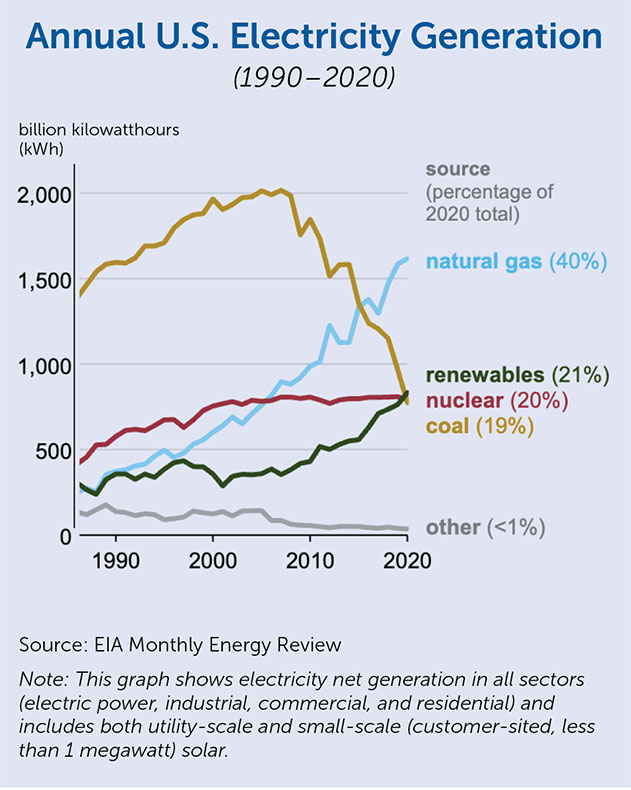What is the biggest source of energy to us?

Energy is an essential part of our everyday lives, powering our homes, businesses, and transportation. But have you ever wondered what the biggest source of energy to us is? In this article, we will delve into the various energy sources that play a significant role in our lives and explore which one holds the title of the dominant force.
- Understanding Energy Sources
- The Importance of Identifying the Biggest Energy Source
- The Role of Fossil Fuels in Energy Production
- The Rising Prominence of Renewable Energy
- Exploring Nuclear Power as a Potential Dominant Energy Source
- Assessing the Impact of Hydroelectric Power
- Examining the Potential of Solar Energy
- Unleashing the Power of Wind Energy
- Discovering the Untapped Potential of Geothermal Energy
- The Role of Biomass in the Energy Landscape
- Conclusion
- Frequently Asked Questions
Understanding Energy Sources
Before we identify the biggest energy source, it is crucial to understand the different types of energy sources available to us. These sources can be broadly categorized into two groups: non-renewable and renewable energy sources.
The Importance of Identifying the Biggest Energy Source
Identifying the biggest energy source carries immense significance as it helps us determine the sustainability, environmental impact, and future of our energy systems. By understanding which source dominates the energy landscape, we can make informed decisions about energy production, consumption, and conservation.
The Role of Fossil Fuels in Energy Production
Fossil fuels, such as coal, oil, and natural gas, have historically been the primary source of energy worldwide. They have powered industries, generated electricity, and fueled transportation for decades. However, their dominance comes at a cost, as they contribute to air pollution and climate change.
The Rising Prominence of Renewable Energy
In recent years, renewable energy sources have gained significant traction and are increasingly becoming the focus of energy production. Renewable sources, including solar, wind, hydroelectric, geothermal, and biomass, offer cleaner and more sustainable alternatives to fossil fuels.
Exploring Nuclear Power as a Potential Dominant Energy Source
Nuclear power is another energy source that has the potential to become a dominant force. It produces large amounts of electricity without greenhouse gas emissions, making it an attractive option for countries aiming to reduce their carbon footprint. However, concerns regarding safety and waste disposal pose challenges to its widespread adoption.
Assessing the Impact of Hydroelectric Power
Hydroelectric power, generated from flowing water, is a reliable and renewable energy source. It accounts for a significant portion of the world's electricity production, particularly in regions with abundant water resources. While it offers numerous advantages, such as low emissions and storage capabilities, its feasibility is limited to areas with suitable geography.
Examining the Potential of Solar Energy
Solar energy, derived from the sun's radiation, is a virtually limitless source of power. It is clean, renewable, and becoming increasingly affordable and accessible. The development of solar technologies, such as photovoltaic cells and solar thermal systems, has propelled its growth in the energy sector.
Unleashing the Power of Wind Energy
Wind energy harnesses the natural force of the wind to generate electricity. It is a clean and abundant source of energy, capable of powering entire communities. With advancements in wind turbine technology and the establishment of wind farms, wind energy has the potential to become a dominant player in the energy landscape.
Discovering the Untapped Potential of Geothermal Energy
Geothermal energy taps into the Earth's natural heat to produce electricity and heat buildings. It is a sustainable and reliable energy source, particularly in areas with geothermal hotspots. Although geothermal power is currently underutilized, further exploration and technological advancements could unlock its full potential.
The Role of Biomass in the Energy Landscape
Biomass, derived from organic matter such as plants and agricultural waste, can be converted into energy through various processes. It offers a renewable source of heat and electricity while also reducing waste. Biomass has gained attention as a viable alternative to fossil fuels, particularly in the transportation sector.
Conclusion
While fossil fuels have historically dominated the energy landscape, renewable energy sources are gaining momentum and challenging their reign. The transition towards a more sustainable and cleaner energy future is underway, with solar, wind, hydroelectric, geothermal, and biomass collectively contributing to the energy mix.
Frequently Asked Questions
What is the current dominant energy source worldwide?
The current dominant energy source worldwide is still fossil fuels, with coal, oil, and natural gas accounting for the majority of energy production.
What are the advantages of renewable energy sources?
Renewable energy sources offer numerous advantages, including reduced greenhouse gas emissions, increased energy security, job creation, and the potential for decentralized energy production.
How does nuclear power contribute to the energy mix?
Nuclear power contributes to the energy mix by generating a significant amount of electricity without producing greenhouse gas emissions. It offers a reliable and continuous source of power, but challenges related to safety, waste disposal, and public perception need to be addressed.
Is it possible for one energy source to become the sole dominant force?
While it is unlikely for one energy source to become the sole dominant force, the global energy landscape is shifting towards a more diversified mix. A combination of renewable energy sources, along with advancements in energy storage and grid technologies, will play a crucial role in achieving a sustainable and reliable energy future.

Leave a Reply